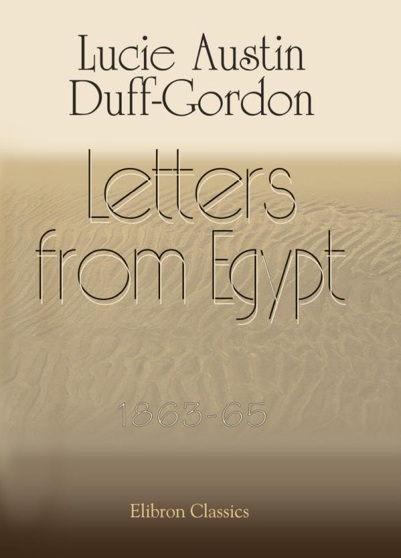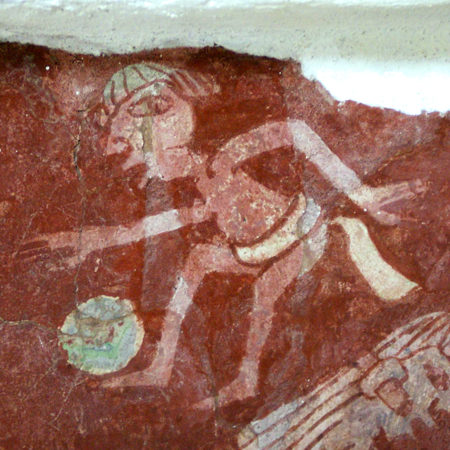Magic Stones: The Secret World of Ancient Megaliths by Jan Pohribny, Julian C. Richards “Magic Stones” documents, in stunning and evocative photographs, our ancestors’ obsession with stone. Throughout Europe stone has been used to create dwellings for the living and the dead, as a canvas for our earliest art, to celebrate the heavens and in ways that are still, even today, beyond our understanding. From the sun-drenched temples of Malta and the great tombs and alignments of Brittany to the labyrinths of icy Finland, this fascinating book explores these stones in their landscape, as part of nature and as a…
-
-
Letters from Egypt, 1863-1865 by Lucie Duff Gordon In 1862 Lucie Duff Gordon, the cousin of Harriet Martineau and a friend of Caroline Norton, Meredith and Thackeray, headed to Egypt on a solo trip designed to rid herself of consumption. She spent the next seven years in a ruined house above a temple in Luxor. She integrated quickly, setting up a hospital and welcoming the people of Luxor into her house. Her story is told through her letters. This Elibron Classics book is a facsimile reprint of a 1865 edition by Macmillan. Adamant Media Corporation (6 Dec 2001) 386 pages
-
Tucked away on an unremarkable street in central London is a chunk of oolite rock known as the London Stone. Said to date back to the founding of Roman London, the Stone is one of Britain’s most enigmatic and overlooked monuments. A proverb states that “so long as the stone of Brutus is safe, so long shall London flourish”. Like the ravens of the Tower of London, the Stone’s fate is tied to that of the city. Historical sources from medieval times reference the Stone and its importance to Londoners, yet few people today have ever heard of it. Overlooked…
-
Tutankhamun’s Footwear Studies of Ancient Egyptian Footwear by André J.Veldmeijer, Alan J. Clapham, Erno Endenburg, Aude Gräzer, Fredrik Hagen, James A. Harrell, Mikko H. Kriek, Paul T. Nicholson, Jack M. Ogden, Gillian Vogelsang-Eastwood The discovery of Tutankhamun’s tomb by Howard Carter in 1922 is one of the most significant archaeological discoveries of all time. It took Carter and his team 10 years to clear the contents of the tomb and among the objects found was a large collection of shoes and sandals. The footwear is analysed here in detail for the first time since the discovery using Carter’s records and…
-
Can a modern couch potato be trained to fight like a Roman gladiator? That’s a question that a group of students and experts in Germany are trying to answer with an experimental archaeology project, using expertise from ancient history together with sports science. Twenty students are being put through their paces to find out how gladiators in ancient Rome might have actually trained for their fights in the arena. The cross-disciplinary project aims to get a different perspective on a fascinating area of history that is in the limelight following the success of films such as Gladiator and the TV…
-
It might have taken Europeans until the 19th century to make rubber, but Mesoamericans were playing with bouncy balls back in 1,600 BC. And not only were pre-Columbians the world’s first polymer scientists, but new research suggests they fine-tuned their discovery for different uses. According to Professor Dorothy Hosler and Michael Tarkanian of the Massachusetts Institute of Technology (MIT) cultures like the Mexica, Olmec and Maya perfected a chemical processing system to create rubber with varying qualities. Bouncy rubber was used for rubber balls, used during the legendary Mesoamerican ball-game (see more ancient sports), while axe-heads were fastened with a…
-
The question of how the Great Pyramid of Giza was built is one of the most hotly-debated topics in ancient history. Maverick French architect and self-styled “Mr Pyramid” Jean-Pierre Houdin is determined that he has the answer – the the 4,569 year-old monument was, he argues, erected from the inside-out, using an internal ramp built into the fabric of the structure. Others are skeptical of his theory, but Houdin is certain he has the proof. Here he gives some exclusive insights into his life and work (a decade-long obsession), launches a broadside at the Egyptology fraternity that he feels still…
-
Think you know all there is to know about these goliaths of the ancient world? Heritage Key picks out ten key facts about pyramids. 1. There are actually 118 pyramids in Egypt. Sure, you might have heard of Khufu‘s, or Khafre’s – or even Djoser’s incredible Step Pyramid at Saqqara, the first known pyramid ever built. But what about the ones which don’t grab the headlines: Amenemhat III‘s Black Pyramid of Dashur looks more like Ayer’s Rock than an Egyptian tomb, and Sahure’s fine mausoleum in Abusir once stood 47m high. 2. The 118th pyramid was unearthed by Egypt’s most…
-
Question – who can completely fill up a cavernous 1,500 seat domed hall on a Saturday night in Toronto? Answer – Dr. Zahi Hawass “I don’t get to introduce rock stars,” said Art Gallery of Ontario CEO Matthew Teitelbaum. Well tonight he did. Forget the critical New Yorker article, the mixed reviews of the new Tut exhibition at the Art Gallery of Ontario, or the fact that local Toronto media largely stayed away from this lecture. The world’s most well-known Egyptologist completely filled Convocation Hall, with people who had all paid a small admission fee (no more than $18) to…
-
For any solider fighting wars away in foreign lands, letters to and from family and loved ones take on enormous resonance and importance. We’ve all seen the TV and movie versions of army life in the world wars, in which the handing out of letters is a ritual frought with excitement, emotion, and rivalry. The same situation was probably played out thousands of years earlier, as some remarkable ancient letters attest. While the first letters ever written were probably cuneiform imprints onto clay tablets, penned in Mesopotamia and Egypt, by the time the Roman civilization began to expand around the…






